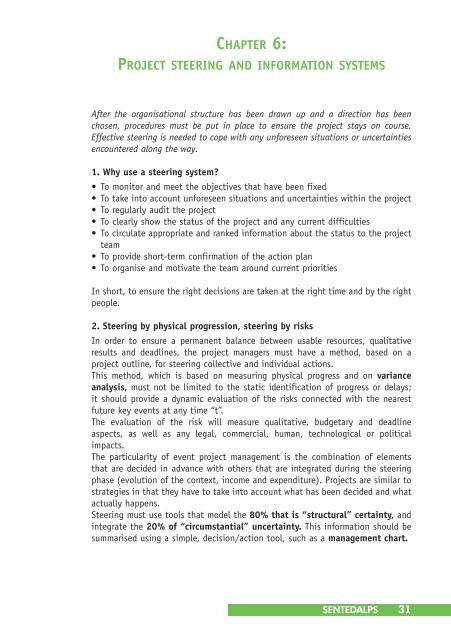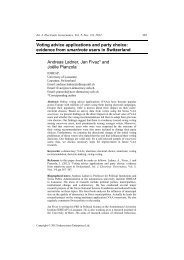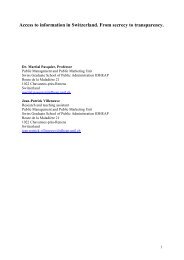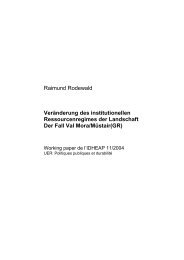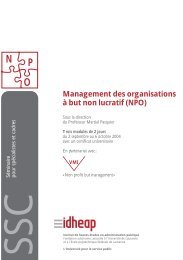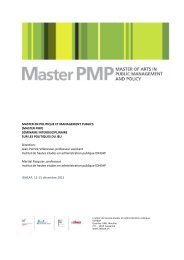organisational functions - Alpine-space.org
organisational functions - Alpine-space.org
organisational functions - Alpine-space.org
You also want an ePaper? Increase the reach of your titles
YUMPU automatically turns print PDFs into web optimized ePapers that Google loves.
CHAPTER 6:<br />
PROJECT STEERING AND INFORMATION SYSTEMS<br />
After the <strong><strong>org</strong>anisational</strong> structure has been drawn up and a direction has been<br />
chosen, procedures must be put in place to ensure the project stays on course.<br />
Effective steering is needed to cope with any unforeseen situations or uncertainties<br />
encountered along the way.<br />
1. Why use a steering system?<br />
• To monitor and meet the objectives that have been fixed<br />
• To take into account unforeseen situations and uncertainties within the project<br />
• To regularly audit the project<br />
• To clearly show the status of the project and any current difficulties<br />
• To circulate appropriate and ranked information about the status to the project<br />
team<br />
• To provide short-term confirmation of the action plan<br />
• To <strong>org</strong>anise and motivate the team around current priorities<br />
In short, to ensure the right decisions are taken at the right time and by the right<br />
people.<br />
2. Steering by physical progression, steering by risks<br />
In order to ensure a permanent balance between usable resources, qualitative<br />
results and deadlines, the project managers must have a method, based on a<br />
project outline, for steering collective and individual actions.<br />
This method, which is based on measuring physical progress and on variance<br />
analysis, must not be limited to the static identification of progress or delays;<br />
it should provide a dynamic evaluation of the risks connected with the nearest<br />
future key events at any time “t”.<br />
The evaluation of the risk will measure qualitative, budgetary and deadline<br />
aspects, as well as any legal, commercial, human, technological or political<br />
impacts.<br />
The particularity of event project management is the combination of elements<br />
that are decided in advance with others that are integrated during the steering<br />
phase (evolution of the context, income and expenditure). Projects are similar to<br />
strategies in that they have to take into account what has been decided and what<br />
actually happens.<br />
Steering must use tools that model the 80% that is “structural” certainty, and<br />
integrate the 20% of “circumstantial” uncertainty. This information should be<br />
summarised using a simple, decision/action tool, such as a management chart.<br />
SENTEDALPS 31


